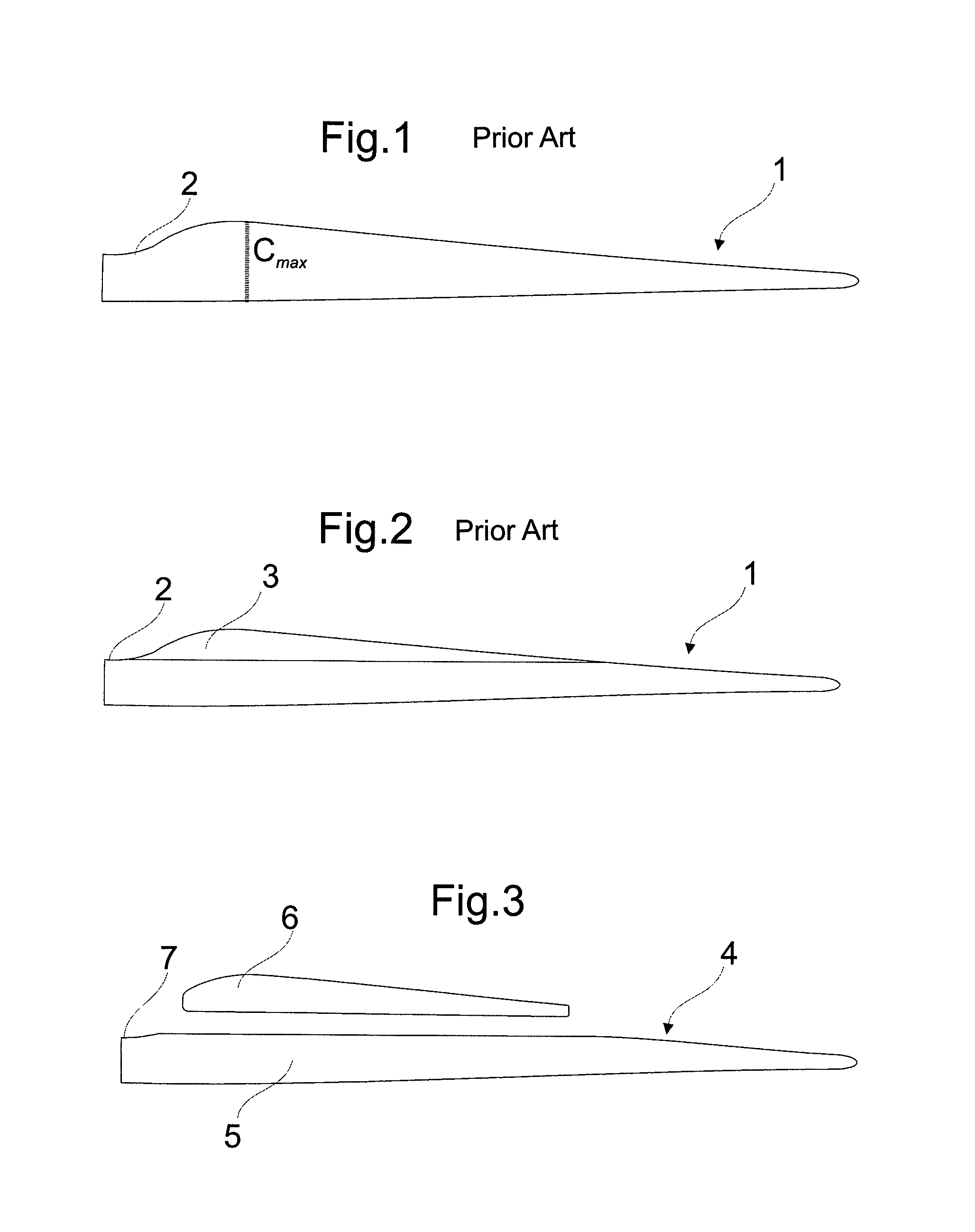Multi-element blade with aerodynamic profiles
a multi-element blade and profile technology, applied in the direction of propellers, propulsive elements, water-acting propulsive elements, etc., can solve the problems of high transportation cost of blades, blades with greater dimensions already exceeding this limit, and logistical difficulties, so as to facilitate logistic procedures, reduce blade dimensions, and increase the aerodynamic efficiency of blades
- Summary
- Abstract
- Description
- Claims
- Application Information
AI Technical Summary
Benefits of technology
Problems solved by technology
Method used
Image
Examples
Embodiment Construction
[0041]The various modes of execution of this invention are not limited to the constructive details explained in this description and figures, to the extent that this invention can be realized by other equivalent configurations.
[0042]This invention, therefore, basically consists in a blade applied in horizontal rotation wind turbine rotors, with blades perpendicular to the axis of rotation, in which each one of said blades is made up of various elements forming aerodynamic profiles fixed between them by means of fastening elements, being that the elements forming profiles are positioned in the region closer to the blade root.
[0043]FIG. 1 shows a longitudinal plane view of a conventional blade (1). As can be seen in this figure, the chord in the root is relatively greater than at the edge of the blade, being that in a certain straight section there is a maximum chord (Cmax). Different geometries, sizes, internal structures and raw materials can be used to obtain a specific blade for a...
PUM
 Login to View More
Login to View More Abstract
Description
Claims
Application Information
 Login to View More
Login to View More - R&D
- Intellectual Property
- Life Sciences
- Materials
- Tech Scout
- Unparalleled Data Quality
- Higher Quality Content
- 60% Fewer Hallucinations
Browse by: Latest US Patents, China's latest patents, Technical Efficacy Thesaurus, Application Domain, Technology Topic, Popular Technical Reports.
© 2025 PatSnap. All rights reserved.Legal|Privacy policy|Modern Slavery Act Transparency Statement|Sitemap|About US| Contact US: help@patsnap.com



